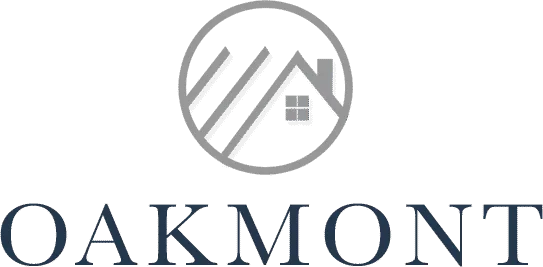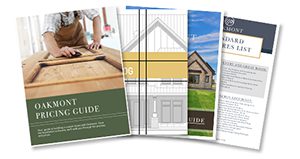There is an excitement that comes with building a custom home and being in control of every detail. The process of seeing your vision come to life, in the form of a home for you and your family, is an incredible adventure. However, as fun as it is, it’s also no small undertaking.
One of the first questions that inevitably arises is: how long does it take to build a custom home?
Well the simple answer is, it depends. There are many decisions and phases of building a custom home–and each of them will influence how long it will take.
This guide will cover the six key phases of building a custom home. We will go over every phase, and everything involved in each one, so that you have a strong grasp on the complete timeline for building your custom home–from start to finish.
6 Factors Influencing How Long it Takes to Build a Custom Home

Before we begin digging into the construction timeline that you can expect, we need to talk about the contributing factors.
There can be a great deal of variation in the timeframe. That’s because, by definition, your custom home will be different from others.
However, there are a few universal factors that will apply to each custom home. It’s important to be aware of these at the beginning of the process so you can set realistic expectations.
Here are six things to consider:
- Size: We’ll start with the obvious here—larger homes will take longer to build than smaller ones, purely due to the amount of work that needs to be done. When it comes to custom homes, larger homes are also often more complex and customized, which can add to the build time.
- Decision-making and communication: When you build a custom home, you have to make a lot of decisions. This can be fun, but may also lead to stress and frustration if you have a hard time making decisions or agreeing on things with your family members. This is one of the areas where you’ll be able to influence your timeline. Take time before each phase of design choices to establish a clear idea of what you want and come prepared to make the final decision before the deadline.
- Design choices: The more intricate your design, the longer it will take. If you are upgrading options or choosing highly-detailed elements for your home, the construction will take longer as your builders put in the extra effort.
- Weather: Poor weather, such as heavy rain, snow, or freezing temperatures, can cause major construction delays. Building teams can plan around expected weather patterns, but inclement weather conditions can be unexpected and throw off your original timeline.
- Location: Your home’s location will also influence how long it takes to build a custom home. This can be related to getting permits and approvals in the area or the conditions of the site itself (i.e., building on a hilly lot, if the lot is developed, etc.). Additionally, remote and rural locations may have logistical difficulties when it comes to transporting supplies and resources, which can extend the build time.
- Resources: Economic shifts and labor market conditions may impact access to resources needed to build a custom home. During the pandemic, for example, lumber prices shot up dramatically and the industry saw huge shipping delays and supply chain issues. There was also a labor shortage in the construction industry and many people were finding it tough to staff their teams. These delays and price fluctuations all contribute to your build timeline.
Some of these factors are predictable, such as your square footage and lot, but others can’t be planned for, such as blizzards or lumber shortages. This is why it’s important to have a flexible mindset and embrace change during this process. We’re big believers in having a solid plan, but also understanding that the process won’t always go according to plan.
How Long Does it Take to Build a Custom Home? 6 Key Phases
The typical time to build a custom home is between 14-20 months. This includes planning, preparation, permitting, and the construction time–which, according to 2022 census data, was 12.1 months from breaking ground to the finishing touches.
But how are these months broken down? And what can you expect during each stage of the process?
Read more about the entire process of how to build a custom home.
There are six key phases when building a custom home:
- Preparation: 1-3 months
- Location: 1-3 months
- Design: 3-6 months
- Approval: 1-3 months
- Construction: 8-12 months
- Closing: 1-2 months
These don’t add up perfectly to 12-18 months since some of these activities happen concurrently. You may breeze right through some of these phases while experiencing delays in others, too.
Also, some of these phases will rely on you, while others will be out of your control and up to a builder, the city, or some other professional. During the process, It’s good to understand where your next decisions will need to be made, so you can start on those while you wait.
Let’s look at each phase, what to expect during each one, and some of the factors that influence the length of time.
Phase I: Preparation

Timeframe: 1-3 months
The preparation phase cannot be overlooked. Taking time, in the beginning, to really understand what you are looking for can set your expectations for the rest of your home building journey.
Preparation is key to keeping progress smooth and streamlined throughout your build. This is where you can set the pace for your custom home project. Many preparation phases have timelines that are entirely up to you. They can be completed in a couple of hours or over the course of months. During this phase you should be completing the following:
- Explore custom homes: Get a sense of what you are looking for by exploring various custom home builds, both in-person and online. You can create a Pinterest board or some other portfolio of all the ideas that you love and want to consider incorporating into your custom home.
- Determine your needs and wants: Figure out what you want in your custom home by way of rooms, amenities, and style. This doesn’t have to be solidified at this point, as you’ll work with an architect and builder to complete the design, but it’s important to start with a base here.
- Create a budget: Based on location, land, size, and other factors, determine a budget for your custom home. Plan for some extra “wiggle room” in your budget for unexpected delays or if you want to add any upgrades later in the process. Read more about budgeting and the costs of building a custom home here.
Other steps that need to be accomplished during the preparation process take the timeline out of your hands. Once you’ve determined what you’re looking for, your needs, and your budget, you will also want to take these steps.
- Secure financing: Approach your bank or another lender to secure financing for your custom home early. It’s important to do this so the project can go forward without any major issues.
- Assemble your team: Your team will include an architect, a custom builder, and interior designer. It’s common for these professionals to work together as a team, or they can refer you to others they’ve worked with before. Do your due diligence to get to know your team before locking into any written commitments with them.
The important thing in the preparation step is to take your time. Contrary to what you may think, more time spent preparing may actually save you time, and headaches, in the future when hard decisions may have to be made. Getting a clear view of the home you want, and can afford to build, as well as assembling your team are processes you don’t want to rush through, as they set the parameters for what’s possible moving forward.
Phase II: Location
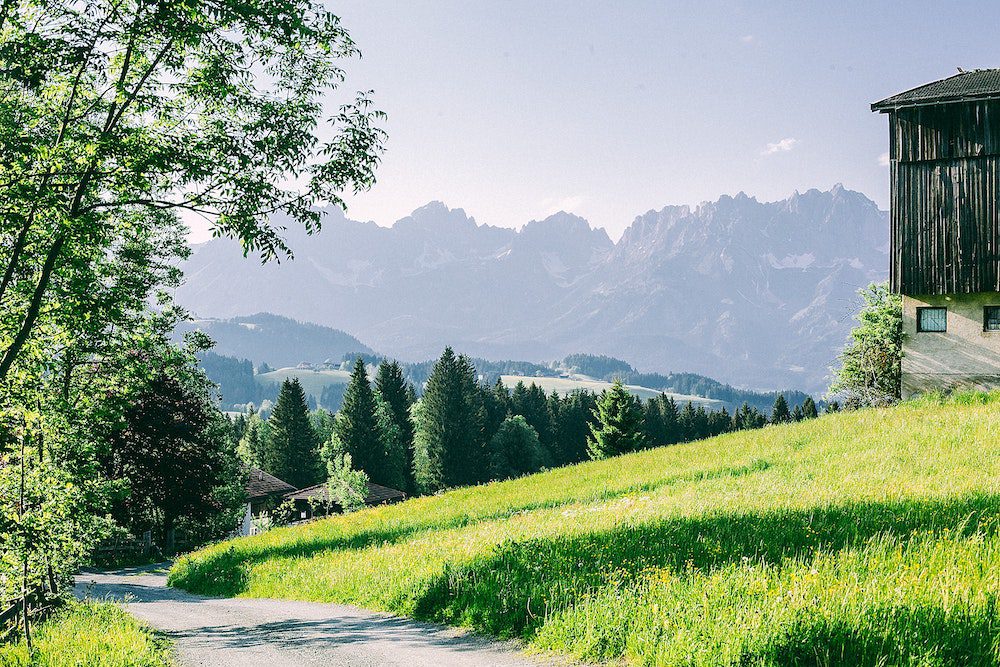
Timeframe: 1-3 months
Location is a driving factor for why many people move or choose to build a custom home. Your home’s location impacts lifestyle factors like commuting, access to services, nearby amenities, and your school district.
Your ideal build location may also be a key determinant in how long it takes to complete your custom home. As mentioned earlier, rural locations can be more costly and time-consuming to build in, as can specific land lots.
So, choosing the right location is not only essential to the lifestyle you want to have, but how long it will take to build your custom home.
There are three phases related to finalizing your location:
- Finding land (Varies): First you need to look for land. This can be done through a real estate agent, online platform, or your builder who may have lots available. You want to think about a location that meets your lifestyle factors, too, such as proximity to work, community, amenities, services, and neighbors. The time it takes to find the exact location will depend a lot on how particular you are. If you are open to any location, you’re more likely to find something that suits your needs and wants. On the other hand, if your needs are more specific, you may need more time to find an available lot in your perfect location.
- Purchasing land (2-4 weeks): Once you’ve found land you want to purchase, you’ll work with an agent, and possibly a bank, to complete the sale. Using your builder’s lot, or buying a lot in one of their pre-approved communities might make this step easier on you. Either way, completing the purchase usually takes about a month.
- Developing land (2-3 months if necessary): You can purchase land that’s already developed and ready to build on. In this case, the lot already has utility access, vegetation removed, and the land has been prepared. If your land is not developed, you will need to wait 2-3 months while a developer readies the land. This extends the overall timeline and cost associated with the project, especially if it’s particularly hilly or has a lot of vegetation.
Take your time in this phase—location is something you can’t change later in the process!
Once you’ve finalized your location, you can enter into a contract with your builder and start the home building process. Now is when you get into the really exciting stuff—bringing your vision to life!
Phase III: Design

Timeframe: 3-6 months
When you envision your custom home, you imagine cooking in your dream kitchen, relaxing in your master bathroom, and spending family time in your living spaces. This step is where you bring all of those dreams into the real world.
However, when it comes time to actually make all those choices, you may find all that decision making to be more time consuming than you imagined. But, if you come prepared and have the right team, everything will be much quicker and smoother.
The work you will do with your design team is broken into what the architect does and what the interior designer does. How long each phase takes will be determined by your availability and the availability of your team. Your prompt communication and an eager design team will help each step progress smoothly and quickly.
Architect Phase (2-3 Months)
Your architect is a key team member because they come up with the overall design of the home. You will work closely with them to share your ideas, preferences, and feedback so that they incorporate your unique look and feel into the house design.
Here’s the timeline for architectural design:
- Predesign and research: Also referred to as the programming phase, this kicks off the design process. The architect will take time to understand the plot of land where the project takes place, looking into things like zoning, availability of utilities, if there is a neighborhood design review committee, and the topography of the land. This is also where the architect and client will determine the project scope and some initial design ideas.
- Schematic design: During this stage, the architect will develop designs for client approval. A design proposal includes initial site and floor plans. The architect will also provide an initial elevation, or home exterior visualization, at this point. You will meet with your architect regularly to give feedback and make sure you’re happy with the design as it progresses.
- Design development: Once you are happy with the design, the architect will take time to develop a more detailed plan. This will include things like the placement of doors and windows, and finalized structural systems. At this stage, the architect will come up with accurate estimates for the project costs so you can stay within your budget.
- Construction documents : This last step of the architectural planning process can take the most time because they are so detailed and specific. These documents need to be well-planned for execution by the builder.
Nearly everything your architect does will need to happen before construction can begin. If your architect needs to reenter the picture and make changes after your build has started, that will certainly extend your timeline.
Stay in close contact with your architect and make sure you are truly happy with things before it progresses further.
Interior Design Phase (2-3 Months)
If the architect is the person concerned with the big, overall vision of your home, then an interior designer is more focused on the details.
Often, the designer and the architect will work together, with you, to determine the choices you want to make. The architect and the interior designer rely on each other, as decisions that are made with one will likely impact the other.
You can come to your designer with an idea of what you want, or work with them to discover your likes and dislikes. Then, together, you can make decisions for your home around your vision and selections that you want. Your designer is there to act as a guide for you, not the decision maker.
They can also help you visualize and determine the larger picture of your home so you don’t get too lost in the details.
Similar to the architect, your work with an interior designer will run in phases:
- Initial meeting: First, you’ll sit down and talk about the interior design concept. You can show them any pictures or inspiration you love and they’ll walk you through the process.
- Design Plans: While your architect is creating floor plans, you should also be meeting with your interior designer to consult on the design elements that may be structurally important to your home (ie. exterior finishes, kitchen layout, hearth style). Your overall vision for your home, interior and exterior, should come to life here with the help of your architect and designer.
- Selections: Here is where the details and look of your home will be determined by the specific choices you make. This phase will happen over the course of several meetings where your designer will guide you through the hundreds of options available to you. To avoid decision fatigue and help keep your mind clear, your selections may be broken down into separate meetings that usually include: exterior, doors and windows, paint, flooring, carpentry, tile and countertops, cabinetry, appliances, plumbing and lighting.
- Reviews and Revisions: Once you’ve made your selections, there will usually be a review process. Your designer will assemble all of your choices into a visual representation for your approval or alterations. You will also see visualizations of things like cabinet and shelving layouts, and any other special design elements you want incorporated in your home. At this point, the builder will have begun ordering your selection and you may have to alter some choices depending on availability and lead time.
Unlike your architect, often your designer will be meeting with you concurrently during your build. However, your availability and communication are just as important in expediting the design phases. Your selections will need to be ordered, shipped, and prepared before they are implemented into your home, so your decision making and communication here affects the length of the build process.
Phase IV: Approval

Timeframe: 1-3 months (varies by jurisdiction)
One of the biggest factors impacting how long it takes to build a custom home is permitting. Before your builder can start building, permits need to be submitted and plans need to be approved. Specifically, the construction documents created in the architect’s phase need to be approved by the city or jurisdiction where your custom home is located.
This phase will mostly be a passive phase for you, unfortunately, as there’s not much you can do to expedite or alter the time it takes to go through the government systems.
The approval phase can vary significantly by jurisdiction. Some cities have very efficient approval processes, whereas more densely populated areas are notorious for their strict regulations that can make the process take much longer.
For example, city documentation puts review time in Denver at 13 weeks and in San Diego at 6-12 months. Whereas In Boise, Idaho—a smaller city where we’re located—the typical review time for building plans is 4-8 weeks.
However, as a general guideline, 90% of single-family homes take two months on average to finalize permitting.
Because this approval phase can vary significantly based on location, it’s crucial to work with a builder who is familiar with the area and knows how to navigate things as efficiently as possible. You can also ask a builder, local to the area you are considering, what timeline you can expect for permitting.
Phase V: Construction
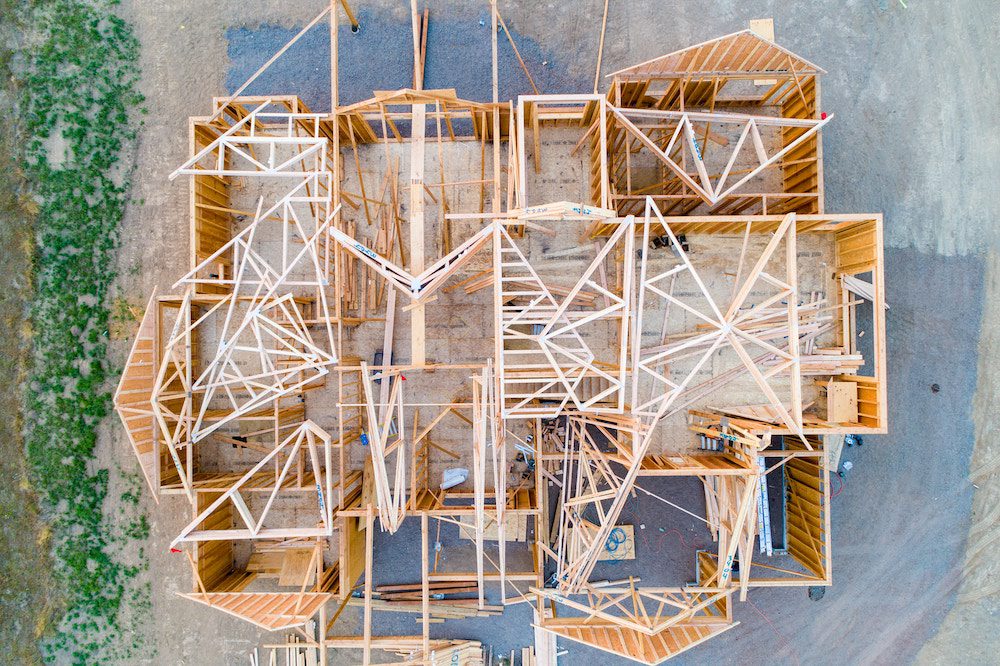
Timeframe: 8-12 months
Are you ready to break ground? Seeing your vision come to life in front of your eyes is such an exciting process.
At this time, your architect will take a backseat to your builder and their team who will start working on your custom home based on the approved designs and plans.
The construction phase is where most project delays happen. As we discussed earlier, things like weather conditions or economic and supply chain issues can unexpectedly disrupt the building time frame.
With that said, you can count on the following steps to take place:
- Site preparation (6-10 weeks): This may have been done previously when you purchased the land, but includes getting the site ready for construction.
- Foundation (4-6 weeks): The foundation includes pouring footings, foundation, slab, and installing drain ties.
- Primary structure (4-6 weeks): This step creates the “bones” of the house—framing walls, putting in doors, and installing a roof.
- HVAC (1 month): Heating, ventilation, and air conditioning are installed.
- Plumbing and electrical (12-14 weeks): All piping and wiring are installed into your home before the finishing insulation and drywall are put in.
- Insulation and drywall (6-8 weeks): The walls of your home really start to take shape as insulation and drywall cover the framing, plumbing, and electrical work.
- Exterior (6-8 weeks): Here the builders focus on installing windows, roofing, siding, brick, and the trim of your house.
- Caulk and paint (4-8 weeks): Your builder primes, caulks, and paints all interior and exterior walls.
- Flooring and cabinetry (6-10 weeks): The bulk of your interior elements are installed in your home, including your flooring and carpets, cabinetry, trims, and hardware.
- Final touches (10-16 weeks): This is where things really start to shine! Final touches include things like light fixtures, mirrors, and appliances. Your home will be thoroughly cleaned and all touch-ups will be completed.
You will be onsite at times throughout the construction process to complete walkthroughs and approvals. Because this is your custom home, you will also have the opportunity to make alterations and additions during these walkthroughs. This typically happens at a few key stages:
- Rough: When the framing is complete and you see the structure of your home.
- Electrical: After most electricals have been installed, you can pinpoint any additional outlet, switch, and lighting locations you would like.
- Carpentry: After shelves, accent walls, built-in features, and moldings are completed, you can approve, or add to, the carpentry.
- Details and finishes: After the last pieces are done—countertops, floors, paint, tiles, lighting, etc. Here is where you can make any final changes or resolve any issues with the construction.
Each walkthrough just takes a few hours to complete, but make sure you are in communication with your builder to anticipate and plan for when these will take place. Strong communication ensures that you are completing things in a timely manner so that the build can continue.
Make sure you are also using the walkthrough times to ask any questions you have and address concerns. Again, the earlier things can be resolved or changed, the better it is for your overall timeline and process.
Phase VI: Closing
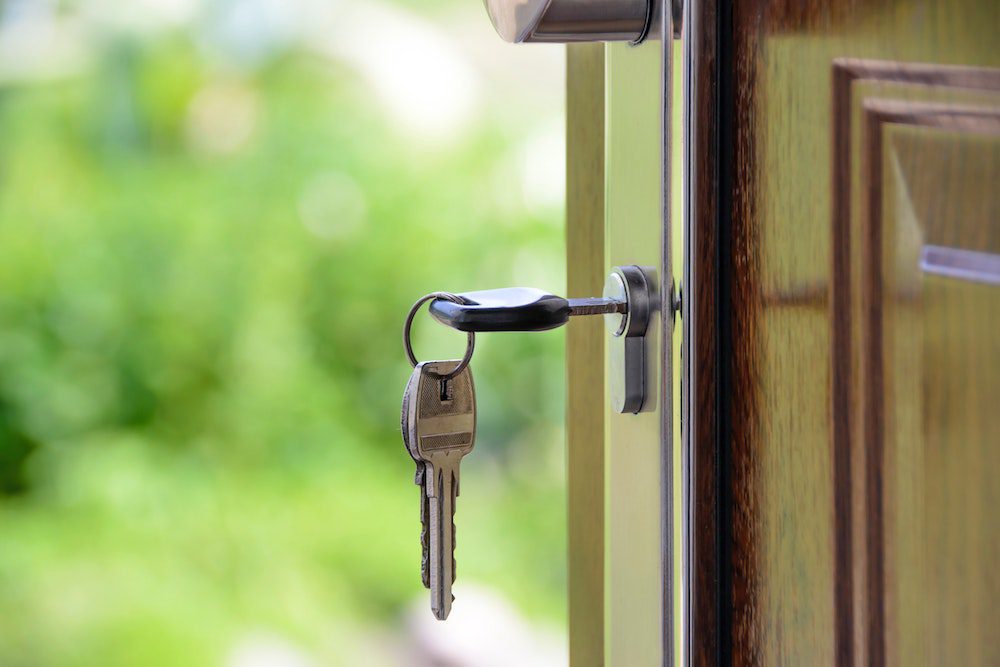
Timeframe: 1-2 months
The house is built, time to move in! Well, not so fast—there are a few closing pieces that need to happen first.
You’ll need to follow these steps:
- Final walkthrough: One last walkthrough through your home will ensure you are happy with the final product. This is your last chance during the build to communicate with your builder and team members about any issues or problems to fix. Keep in mind, a good builder should provide a warranty that will allow you to resolve some issues that might not be discovered during this review.
- Obtain a home inspection and appraisal: A third-party inspector can also conduct a walkthrough of the home, they will ensure everything is up to standards and find any hidden issues you may not be able to find yourself. Your lender will also want a home appraisal to make sure you’re paying a fair value for the home before they lend you the money. Keep in mind, if your closing time is extended, it’s usually due to issues during these two steps.
- Finalize your mortgage : Hopefully, you secured financing in your preparation phase. You may have a construction loan, which converts into a permanent mortgage after the build is done. Or you may have some other plan in place with your lender. If there were substantial changes to the original plan, you may need to have the house appraised and get approved for a different mortgage. Your builder or real estate agent will usually be engaged in this process as well.
- Settle bills and closing costs: After you and your builder, lender, and realtor have settled any potential issues, you will sign your final mortgage documents, make any final payments, and receive the keys to your custom dream home!
The closing process can be fairly quick if you ensure your paperwork is all in order. Getting pre-approval, and staying in touch with your mortgage lender during the build process, is key to a successful closing.
How Long Does it Take to Build a Custom Home?

If you are considering a custom home build of your own, you may be excited, and overwhelmed. A custom home is an incredible undertaking, but when it’s complete it will be worth the time and effort.
How long does it take to build a custom home?
We suggest you plan for 14-20 months when building a custom home from the ground up.
If you do decide to build your own home, we wish you the best of luck in this exciting endeavor!
Hopefully you get exactly what you want, and more.
